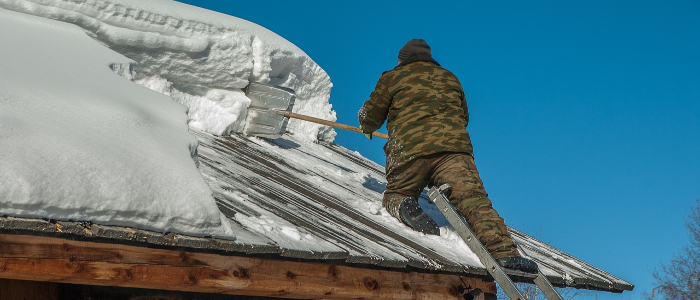
Canadian winters are unpredictable, and proper building maintenance is essential to ensure that the cold does not make itself an unwelcome guest in your property this season.How to winterize your property To stay on top of things, you may want to perform regular maintenance checkups before, during and after the winter season.Watch out for these common signs of trouble: Cracks on interior or exterior walls Warping of interior or exterior finishes Doors jamming or rubbing against the frame Conspicuous creaking noises Buckling ceilings Any other visible physical damage Your property includes another crucial component you may not always think as much about: your roof.
Winterizing your roof The roof of your property may be at risk from damages caused by heavy snowfall, so extra care should be taken to maintain its structural integrity.As a preventative measure, it’s a good idea to inspect your roof twice a year or more: once in the fall, and again in the spring.Not all roofs are the same.
Below, we outline what the most common types of roof coverings are and what to watch out for: Built-up roof coverings: composed of alternating layers of reinforced fabric and bitumen (asphalt), and finished with a top layer of construction aggregate, such as stone or gravel.If built-up roof coverings are poorly installed, pockets of air or moisture can become trapped between the layers and if these blisters burst, the resulting holes can increase the risk of water infiltration.Modified bitumen roof coverings: a long-lasting option for flat roofs made of base and cap sheet membranes and topped with coloured granules, which are much like the gravel on built-up asphalt membranes.
As mentioned above, poor installation can lead to water infiltration and premature ageing.Single-ply membrane roof coverings like Ethylene Propylene Diene Monomer (EPDM) and Thermoplastic Polyolefin (TPO): comprised of flexible sheets of synthetic polymer that can be divided into two main groups, thermoplastics and synthetic rubber.EPDM roofing expands and contracts with temperature changes.
Special attention should be paid to the perimeter and flashing, as the membrane can become unfastened in these areas.Shingle coverings: flat or curved tiles that interlock or overlap in a way that channels water off of a pitched roof.Shingle coverings require a suitable roof pitch and their lifespan varies depending on numerous factors such as the type and quality of the material used and the climatic conditions they’re exposed to.
How to safely remove snow from your roof It’s important to ensure that too much snow does not accumulate on your roof: it’s recommended that snow and ice be removed before their thickness exceeds 20 cm (8 in.).To help ensure that your roof is not damaged in the process, keep these tips in mind: Use wood or plastic shovels and stop at least 10 cm (4 in.) above the finished surface of the roof covering.Avoid sharp tools (e.g., axes or picks).
Use rubber mallets to break up ice.Avoid using excessive heat (e.g., welding torches), which could damage the roof covering.Be careful when using de-icing salt, which can accelerate corrosion of the roof’s metal components.
Ensure there is good water drainage.To help keep track of all snow removal activities, download our snow removal log.Depending on the age and condition of your building, consider consulting a structural engineer to verify whether your roof can handle the stress of heavy snow loads.
Excess weight can not only cause structural damage, but also create ice dams, which can damage the roof drainage system and increase the risk of water damage to the supporting structure of the building.To do or not to do: removing snow from your roof You may choose to remove snow from your roof yourself if you have the right equipment and are prepared for the significant risks that come from performing this task, including personal injury and physical damage to the roof.However, if you’re not confident in removing snow from the roof yourself, you may want to consider hiring a contractor to perform this task.
If you do choose to go that route, be sure to sign a written contract or service agreement that specifically defines the work to be done, as well as each party’s roles and responsibilities.Be sure to also procure a certificate of insurance from the contractor and ask your broker to confirm that it is suitable coverage.In the event of an accident, the complainant (or a witness) must complete an incident report.
Copies of the report form must be kept on-site and include the individual’s contact information, the date when the form was completed, the signature of a manager or employee who witnessed the incident, and relevant details about the incident, including answers to the questions “what?”, “where?”, and “when?”.If possible, you should also take dated photos of the conditions at the scene of the incident, as well as the footwear that the injured party was wearing.Is your roof covered in the way that you want? Don’t let snow be the only thing covering your roof.
Check out our roof assessment tool to help assess the status of your property.
Publisher: Northbridge Insurance








